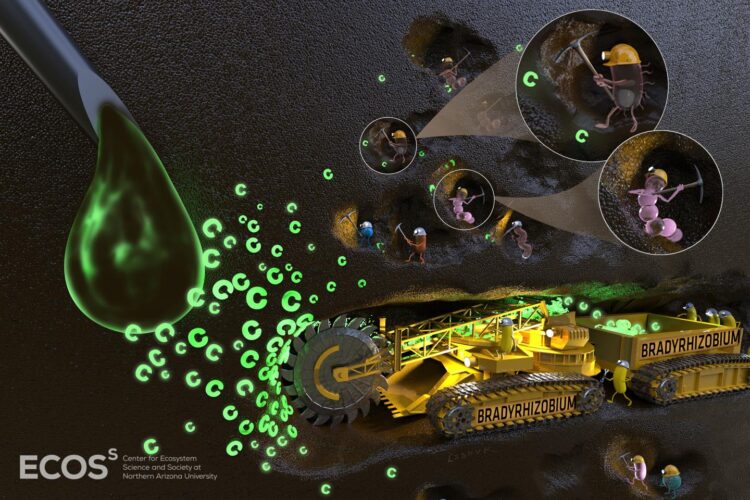Just a few bacterial taxa found in ecosystems across the planet are responsible for more than half of carbon cycling in soils. These new findings, made by researchers at Northern Arizona University and published in Nature Communications this week, suggest that despite the diversity of microbial taxa found in wild soils gathered from four different ecosystems, only three to six groups of bacteria common among these ecosystems were responsible for most of the carbon use that occurred.
Soil contains twice as much carbon as all vegetation on earth, and so predicting how carbon is stored in soil and released as CO2 is a critical calculation in understanding future climate dynamics. The research team, which included scientists from Pacific Northwest National Laboratory, Lawrence Livermore National Laboratory, University of Massachusetts-Amherst, and West Virginia University, is asking how such key bacterial processes should be accounted for in earth system and climate models.
“We found that carbon cycling is really controlled by a few groups of common bacteria,” said Bram Stone, a postdoctoral researcher at the Center for Ecosystem Science and Society at Northern Arizona University who led the study. “The sequencing era has delivered incredible insight into how diverse the microbial world is,” said Stone, who is now at Pacific Northwest National Laboratory. “But our data suggest that when it comes to important functions like soil respiration, there might be a lot of redundancy built into the soil community. It’s a few common, abundant actors who are making the most difference.”
Those bacteria–Bradyrhizobium, the Acidobacteria RB41, and Streptomyces–were better than their rarer counterparts at using both existing soil carbon and nutrients added to the soil. When carbon and nitrogen were added, these already dominant lineages of bacteria consolidated their control of nutrients, gobbling up more and growing faster relative to other taxa present. Though the researchers identified thousands of unique organisms, and hundreds of distinct genera, or collections of species (for example, the genus Canis includes wolves, coyotes, and dogs), only six were needed to account for more than 50 percent of carbon use, and only three were responsible for more than half the carbon use in the nutrient-boosted soil.
Using water labeled with special isotopes of oxygen, Stone and his team sequenced DNA found in soil samples, following the oxygen isotopes to see which taxa incorporated it into their DNA, a signal that indicates growth. This technique, called quantitative stable isotope probing (qSIP), allows scientists to track which bacteria are growing in wild soil at the level of individual taxa. Then the team accounted for the abundance of each taxon and modeled how efficiently bacteria consume soil carbon. The model that included taxonomic specificity, genome size, and growth predicted the measured CO2 release much more accurately than models that looked only at how abundant each bacterial group was. It also showed that just a few taxa produced most of the CO2 that the researchers observed.
“Better understanding how individual organisms contribute to carbon cycling has important implications for managing soil fertility and reducing uncertainty in climate change projections,” said Kirsten Hofmockel, Microbiome Science Team Lead at Pacific Northwest National Laboratory and a co-author of the study. “This research teases apart taxonomic and functional diversity of soil microorganisms and asks us to consider biodiversity in a new way.”
“The microbial demographic data that this technique reveals lets us ask more nuanced questions,” said Stone. “Where we used to characterize a microbial community by its dominant function, the way a whole state is often reported to have voted ‘for’ or ‘against’ a ballot proposition, now, with qSIP, we can see who is driving that larger pattern–the ‘election results,’ if you will–at the level of individual microbial neighborhoods, city blocks.
“In this way, we can start to identify which soil organisms are performing important functions, like carbon sequestration, and study those more closely.”
###
Media Contact
Kate Petersen
[email protected]
Related Journal Article
http://dx.





